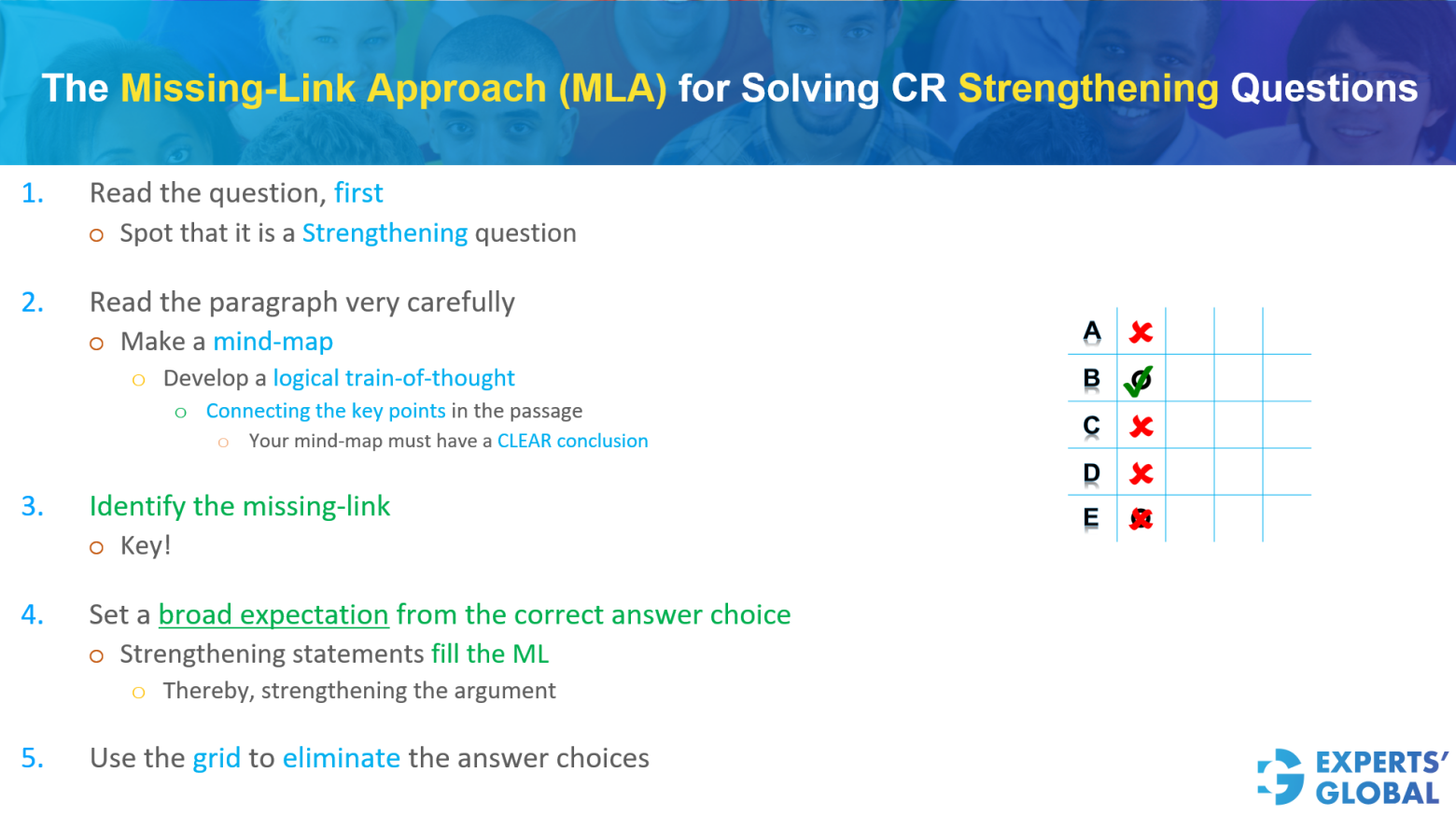Invest 30 seconds...
...for what may lead to a life altering association!
Help Line
- +91.8800.2828.00 (IND)
- 1030-1830 Hrs IST, Mon-Sat
- support@expertsglobal.com
...for what may lead to a life altering association!


GMAT critical reasoning Strengthen the Argument questions offer a passage with a premise, a conclusion, and a noticeable gap between them, which we call the missing-link. You are presented with five answer choices, and the correct strengthening statement is the option that fills this missing-link and makes the conclusion more convincing. CR strengthening questions train you to see what kind of information would add support to a line of reasoning and make it feel clearer and more reliable. Steady practice with this question type is an essential part of any reliable GMAT preparation course. This page offers an organized subtopic wise playlist, along with a few worked examples, for efficient preparation of this concept.
Strengthening statements make an argument more convincing by adding relevant details that link the premise to the conclusion, even though they are not logically essential. This overview explains how such statements differ from assumptions, which must hold true for the argument to survive. The video and article present common strengthening patterns, including establishing causal connections, using benchmark comparisons, making uniqueness claims, and eliminating competing explanations. In the following short video, you will see the approach explained and demonstrated, then linked to GMAT drills, sectional tests, and full-length GMAT practice tests.


Strengthening statements and assumptions both connect an argument’s premises to its conclusion, but they are different in how vital they are to the reasoning. A strengthen statement adds persuasive force to the argument, while an assumption is compulsory; if you remove it, the logic collapses. Both assumption and strengthening statements fill the missing link and support the conclusion, but an assumption must be true for the argument to hold whereas a strengthening statement need not be. Therefore, in simple terms, assumption statements form a subset of strengthening statements. This overview shows you how to distinguish the two by using clear examples that center on the idea of necessity. Understanding this difference improves accuracy in GMAT preparation and develops sharper evaluation skills that carry directly into your business management journey. The short video below gives a focused look at this idea and shows how the GMAT may test it.

Among the limited, genuinely strong sources for high quality CR Strengthen the Argument questions are the official practice materials released by GMAC and the Experts’ Global GMAT course. Within the Experts’ Global GMAT online preparation course, every CR Strengthen the Argument question appears on an exact GMAT like user interface that includes all the real exam tools and features. You work through more than 50 CR Strengthen the Argument questions in quizzes and also take 15 full-length GMAT mock tests that include several CR Strengthen the Argument questions in roughly the same spread and proportion in which they appear on the actual GMAT.
All the best!